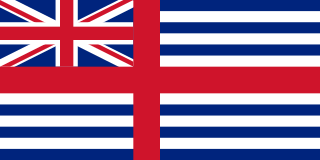
Van Diemen's Land was the colonial name of the island of Tasmania used by the British during the European exploration and colonisation of Australia in the 19th century. The island was previously discovered and named by the Dutch in 1642. Explorer Abel Tasman discovered the island, working under the sponsorship of Anthony van Diemen, the Governor-General of the Dutch East Indies. The British retained the name when they established a settlement in 1803 before it became a separate colony in 1825. Its penal colonies became notorious destinations for the transportation of convicts due to the harsh environment, isolation and reputation for being inescapable.
The history of Tasmania begins at the end of the Last Glacial Period when it is believed that the island was joined to the Australian mainland. Little is known of the human history of the island until the British colonisation of Tasmania in the 19th century.
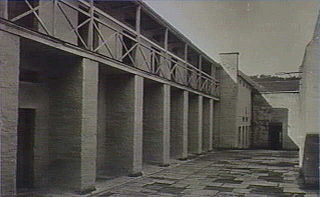
The Cascades Female Factory, a former Australian workhouse for female convicts in the penal colony of Van Diemen's Land, is located in Hobart, Tasmania. Operational between 1828 and 1856, the factory is now one of the 11 sites that collectively compose the Australian Convict Sites, listed on the World Heritage List by UNESCO.

South Hobart is one of Hobart's inner suburbs. It is bound by Dynnyrne, Fern Tree, West Hobart and the Hobart City Centre.
The history of Australia from 1788 to 1850 covers the early British colonial period of Australia's history. This started with the arrival in 1788 of the First Fleet of British ships at Port Jackson on the lands of the Eora, and the establishment of the penal colony of New South Wales as part of the British Empire. It further covers the European scientific exploration of the continent and the establishment of the other Australian colonies that make up the modern states of Australia.

Thomas Bock was an English-Australian artist and an early adopter of photography in Australia. Born in England he was sentenced to transportation in 1823. After gaining his freedom he set himself up as one of Australia's first professional artists and became well known for his portraits of colonists. As early as 1843 he began taking daguerreotypes in Hobart and became one of the earliest commercial photographers in Australia.
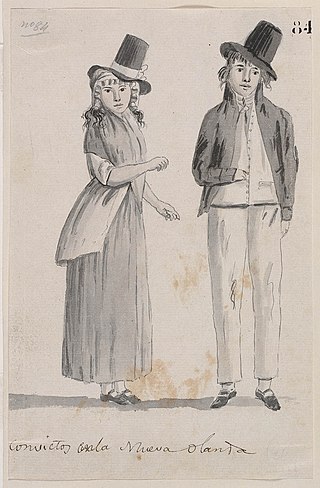
Between 1788 and 1868 the British penal system transported about 162,000 convicts from Great Britain and Ireland to various penal colonies in Australia.
The modern history of the Australian city of Hobart in Tasmania dates to its foundation as a British colony in 1804. Prior to British settlement, the area had been occupied definitively for at least 8,000 years, and possibly for as long as 35,000 years, by the semi-nomadic Mouheneener tribe, a sub-group of the Nuenonne, or South-East tribe. The descendants of theses indigenous Tasmanians now refer to themselves as 'Palawa'. Little is known about the region from prehistoric times. As with many other Australia cities, urbanisation has destroyed much of the archaeological evidence of indigenous occupation, although aboriginal middens are often still present in coastal areas.
The following lists events that happened during 1804 in Australia.
The following lists events that happened during 1812 in Australia.
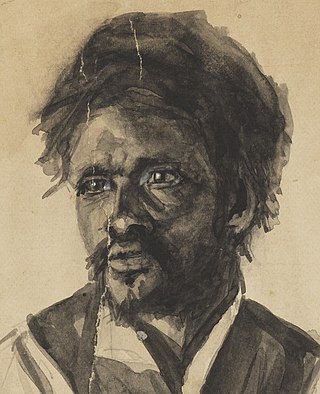
Musquito was an Indigenous Australian resistance leader, convict hunter and outlaw based firstly in the Sydney region of the British colony of New South Wales and later in Van Diemen's Land.

The Parramatta Female Factory, is a National Heritage Listed place and has three original sandstone buildings and the sandstone gaol walls. The Parramatta Female Factory was designed by convict architect Francis Greenway in 1818 and the only female building authorized by Governor Lachlan Macquarie. It comprises the 1821 Matron's Quarters and Administration and Stores Building, the 1821 Female Hospital and the 1826 3rd Class Female Penitentiary. It is the first female factory in the penal colony of New South Wales, and is located at 5 Fleet Street, North Parramatta, New South Wales, Australia. It was one of 13 female factories in the colonies of New South Wales and Van Diemen's Land. In New South Wales, female factories were also established in Bathurst, Newcastle, Port Macquarie and Moreton Bay. The factory idea was a combination of the functions of the British bridewells, prisons and workhouses. The Parramatta Female Factory is being considered for World Heritage listing.
Elizabeth Thackery is the last known survivor of the First Fleet, male or female, and was generally known throughout her long lifetime as the first female convict to land in Australia. Her husband, Samuel King, is thought to be the last male survivor of the First Fleet.
Convict women in Australia were British prisoners whom the government increasingly sent out during the era of transportation (1787–1868) in order to develop the penal outpost of New South Wales into a viable colony.

The Colony of Tasmania was a British colony that existed on the island of Tasmania from 1856 until 1901, when it federated together with the five other Australian colonies to form the Commonwealth of Australia. The possibility of the colony was established when the Parliament of the United Kingdom passed the Australian Constitutions Act in 1850, granting the right of legislative power to each of the six Australian colonies. The Legislative Council of Van Diemen's Land drafted a new constitution which they passed in 1854, and it was given royal assent by Queen Victoria in 1855. Later in that year the Privy Council approved the colony changing its name from "Van Diemen's Land" to "Tasmania", and in 1856, the newly elected bicameral parliament of Tasmania sat for the first time, establishing Tasmania as a self-governing colony of the British Empire. Tasmania was often referred to as one of the "most British" colonies of the Empire.
The Brickfields Hiring Depot was a building located in North Hobart on the site of the current North Hobart Oval. It was completed by the Royal Engineers Department on 1 October 1842 and operated until 1852.
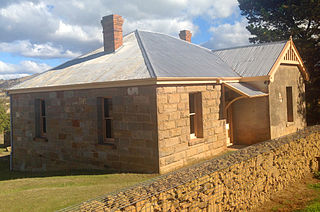
The Ross Female Factory, a former Australian workhouse for female convicts in the penal colony of Van Diemen's Land, is located in the village of Ross, in the midlands region of Tasmania. The site was operational between 1848 and 1854.
The Frederick escape was an 1834 incident in which the brig Frederick was hijacked by ten Australian convicts and used to abscond to Chile, where they lived freely for two years. Four of the convicts were later recaptured and returned to Australia, where they escaped the death sentence for piracy through a legal technicality.
Maria Lord, also known as Maria Risley or Riseley, was an Australian convict and entrepreneur.

St Luke's Anglican Church is a heritage-listed Anglican church at Elizabeth Drive, Liverpool, Sydney, New South Wales, Australia. It was designed by Francis Greenway and built from 1818 to 1820. The property is owned by the Anglican Parish of Liverpool and is the oldest still existing Anglican church in Australia. It was added to the New South Wales State Heritage Register on 2 April 1999.










